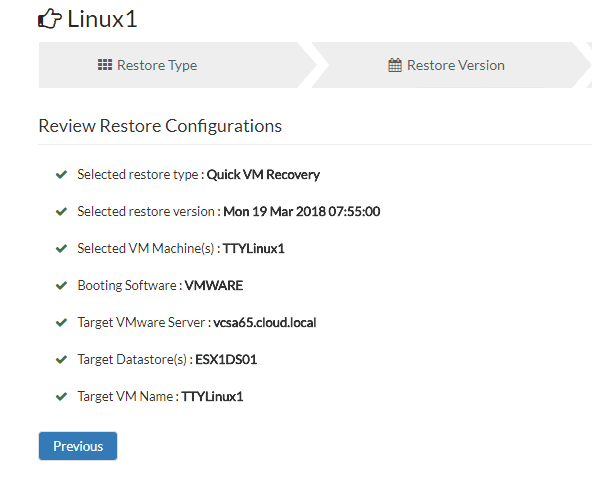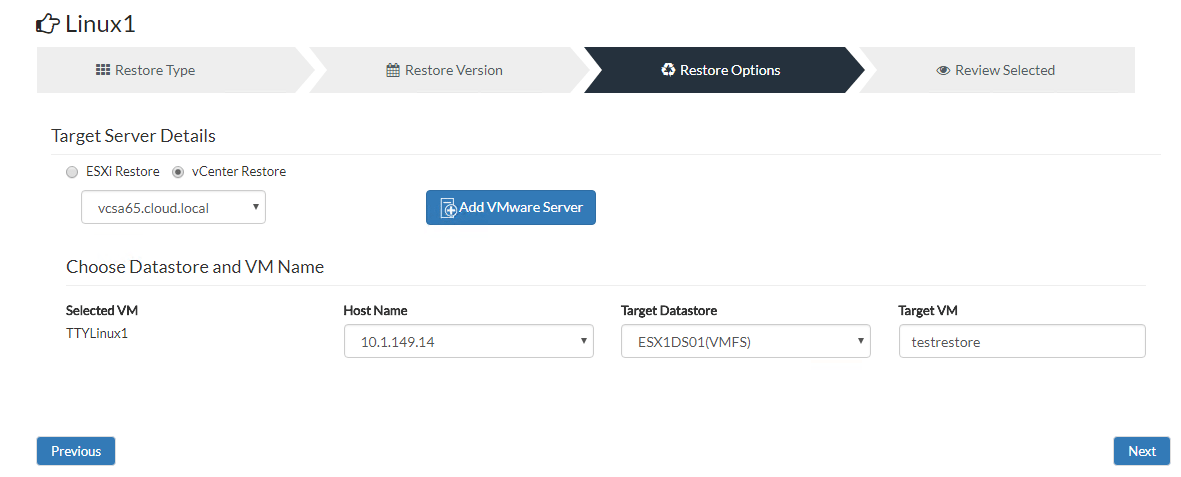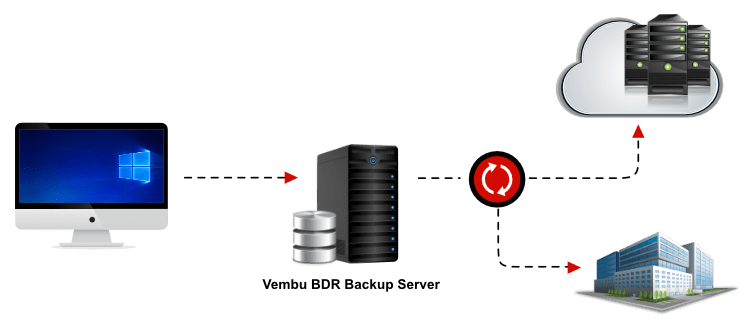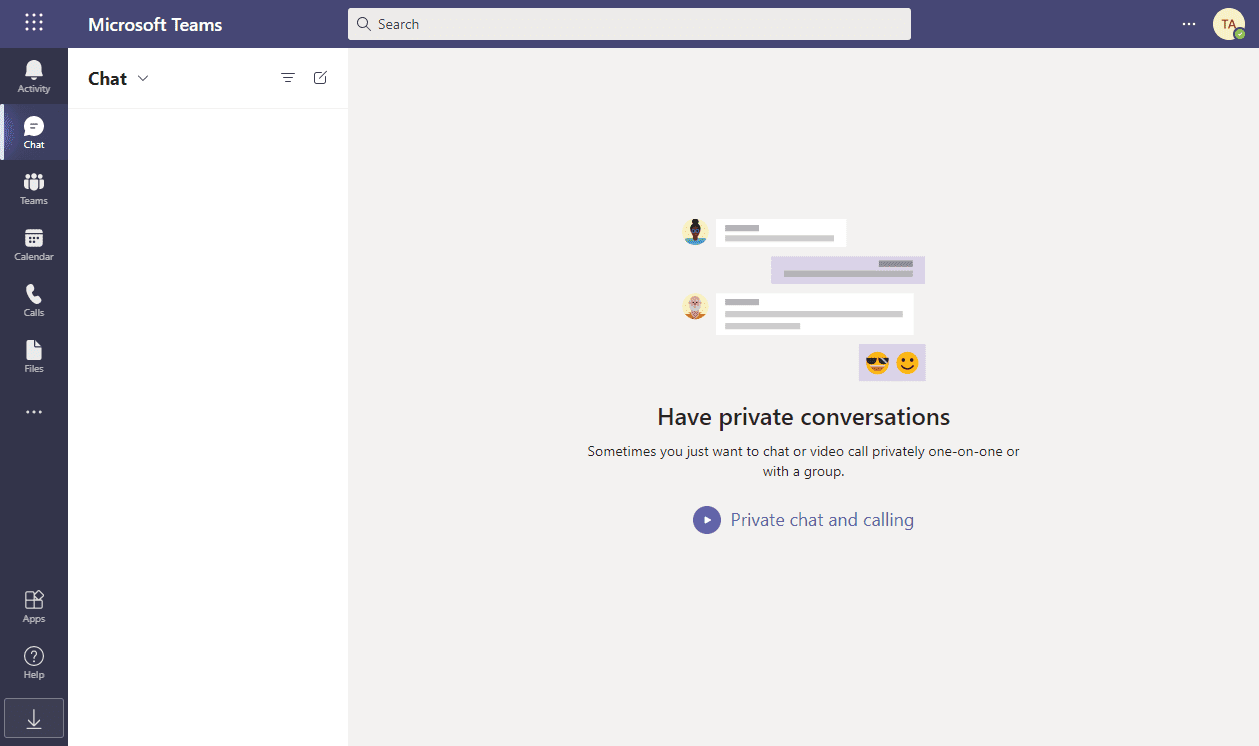There is perhaps nothing that makes an IT administrator’s skin crawl like the words – disaster recovery. It is one of those things that most in IT cringe to think about but it is a necessary part of IT operations. Disaster Recovery requires a lot of thought, planning, testing, and at the heart of any DR plan – a solid data protection product that is able to deliver when it is needed. However, when thinking about disaster recovery, many might make the mistake of thinking that a “one size fits all” approach will suffice when thinking about recovery during a disaster scenario. Rather than thinking about disaster recovery as a one solution approach, businesses should have multiple recovery options that allow choosing how data and services are restored based on the business needs, type of disaster, underlying infrastructure, and SLAs. Let’s take a look at Vembu BDR Suite Multiple Recovery Options for Disaster Recovery and see how multiple recovery options afford businesses the ability to choose which type of recovery aligns with their business needs.
Disaster Recovery Considerations
There are many important considerations that have to be made with Disaster Recovery. Two of the most important aspects of disaster recovery for organizations looking at planning for disaster recovery are Recovery Point Objective (RTO) and Recovery Time Objective (RTO). These two metrics for gauging a disaster recovery plan are key to understanding both your tolerance for data loss and the amount of time it takes for your disaster recovery operations to restore access to data, applications, and services.
- Recovery Point Objective is the amount of data loss your business can withstand to meet SLAs. Depending on the nature of the business, transaction rate of business critical DB servers, or overall churn of data, the Recovery Point Objective may be low for some businesses (15 minutes or so) or possible longer for other (an hour or few hours). Recovery Point Objectives align to meet business SLAs and then data protection solutions must perform protection of business critical data to meet up with the predetermined SLAs defined in the RPO.
- Recovery Time Objective is the amount of time it takes to restore data, services, and applications back to a functional state. In simple terms it is the amount of downtime you experience during the disaster recovery event.
Both of the above metrics, RPO and RTO, are extremely important when considering the impact to your business and data recoverability.
Vembu BDR Suite Multiple Recovery Options for Disaster Recovery
Utilizing disaster recovery solutions that afford multiple recovery options allows organizations to leverage the recovery option that makes the most sense depending on the type of disaster and amount of interruption to data and services. This underscores a number of key requirements for a data protection solution.
- Consistent Management and all-encompassing solution
- Robust Recovery Options
- Cost-effective
- On-premise and Cloud options
Vembu BDR Suite provides organizations with the capabilities to leverage multiple restore options and highlights the strengths of the above data protection requirements. Let’s take a look at five key recovery options and how Vembu BDR Suite allows organizations to utilize these recovery options effectively for disaster recovery.
- Instant Recovery
- Permanent Recovery
- File Level Recovery
- Bare-metal Recovery
- Offsite and Cloud Recovery
Instant Recovery
As the name implies, instant recovery is a recovery of data and services as quickly as possible. Instant recovery typically allows getting “back up and running” in a quick manner and for a shorter time period. This allows the opportunity to restore access to the data or services which affords the time to resolve the underlying issue with the infrastructure that may have led to the need for recovery in the first place.
Vembu BDR Suite allows organizations to do this with the Quick VM Recovery feature that allows organizations to instantly recover the business-critical VMs or physical machines on a hypervisor host. Vembu does this by reading data directly from the backup storage, creating virtual VMDK, VHD, VHDX and IMG disks and in doing so, uses no additional data in storage. An extremely powerful capability that Vembu utilizes is the ability to really be hypervisor agnostic here – VMware VMs can be recovered on Hyper-V and vice versa.

This allows businesses the flexibility to recover within minutes of a disaster to have data and services back online for customers. Instant recovery should be viewed as more of a temporary solution until underlying issues are resolved and data can be more permanently restored. How is permanent recovery carried out?
Permanent Recovery
Permanent recovery is the more typical recovery scenario that might be thought of. Permanent recovery is also known as full VM recovery. This type of recovery restores the full virtual machine along with all persistent data that may be created after Instant Recovery. Permanent recovery can take quite a bit longer than Instant Recovery depending on the amount of data that needs to be restored. Vembu utilizes several performance enhancing features that drastically speed up the permanent recovery process including Direct SAN and Hot-add.
- In Direct SAN mode, Vembu is able to mount the iSCSI or FC SAN targets directly for data transfer which bypasses the need to copy data across the network. This results in much more efficient and higher performance data transfers.
- Hot-add provides the ability of a Vembu BDR server that is deployed as a VM in the ESXi environment to be able to Hot-add the empty disks and allow data to be restored directly to those disks mounted to the Vembu server itself. Afte the restore process is complete, the disks will then be reattached to the recovered VMs. This provides much quicker data restore performance.

File Level Recovery and Application Level Recovery
File Level Recovery or FLR is an extremely important aspect of disaster recovery. Typically File Level Recovery is utilized in very specific instances of disaster recovery that is related to more pointed recovery such as when an end user accidentally deletes a file or folder or may intentionally delete the folder by mistake. End users may also update or modify files in such a way that leads to unintentional data loss such as deleting rows from a spreadsheet, etc. Having the ability to mount restore points and recover specific files and folders allows organizations to recover from these more specific types of data loss that can at times render business operations either impaired or worse.
Vembu BDR Suite’s efficient image-level backups provide Changed Block Tracking enabled restore points that efficiently capture changes with each backup iteration. Vembu allows easily performing granular file restores from these image-level backups without the need to restore the entire backup or virtual machine.
Application Level Recovery provides the ability of restoring the ever critical “application items” that provide critical business functionality such as database applications. Being able to restore application level items assumes that you have the ability to properly backup applications in an “application aware” method. Backing up tranactionally sensitive systems such as databases in an application aware way is critical to ensuring data is consistent and no corruption is introduced into the backup. Database data often lives in memory and there can be pending file I/O operations. If backups are performed without properly flushing data this can lead to much longer restore operations (performing steps to bring these applications up to a consistent state) or even worse, corruption.
Vembu BDR Suite allows performinga application aware backups that properly interact with applications such as Microsoft SQL Server to properly backup the application consistently. This allows performing application level restores such as restoring databases or even tables granularly.
Bare Metal Recovery
Vembu BDR Server provides protection that many other data protection solutions offering virtual solutions do not – physical servers, workstations, and laptops. Bare Metal Recovery or BMR allow restoring physical machines to a pristine state as they were before a disaster strikes. It is important to note that Vembu BDR Suite BMR restores not only data but also the operating system and any critical system partitions. Is Bare Metal Recovery in today’s world even needed?
Even in today’s primarily virtual-centric world, physical servers are still ran for many proprietary applications that require specific hardware to be present or a specific performance profile. Vembu BDR Suite BMR allows backing up these physical workloads.
Offsite and Cloud Recovery
In today’s ever more sensitive data world, having backups of business critical data simply living on-premise is not enough. Organizations today must account for all possible disaster recovery scenarios including losing entire sites. If backups exist only in the same location as production data, there is a good chance backup data will be lost as well as production data – a worst case scenario! Organizations today need to plan for having backup data copied to an offsite or cloud location so that even in the event of a total site loss, data backups exists in other safe locations including an Offsite datacenter or even in the cloud.

Vembu BDR Suite has organizations covered by providing both the OffsiteDR and CloudDR options for synchronizing backup data. OffsiteDR server component allows organizations to provision a synchronized copy of backup data that is loated in their own offsite DR datacenter. CloudDR allows organizations to utilize Vembu’s own cloud environment to house offsite copies of backup data. Both solutions afford organizations many flexible options for data recovery including:
Instant Recovery from the OffsiteDR or CloudDR repository
Mounting image files
Downloading images in VHD, VHDX, VMDK, Flat-VMDK, and RAW files
Live restoring data to ESXi or Hyper-V
The data is safely sychronized from on-premise to Offsite storage using the latest AES 256 encryption algorithms. This ensures data is secure and customer data is safe from compromise as it traverses across networks.
Learn about Multiple Recovery Options
Vembu BDR Suite is a great product that keeps getting better. I have been using and testing Vembu BDR Suite for a couple of years now and it is a great way to protect a VMware or Hyper-V environment. You won’t find a more versatile product on the market that can do as much as Vembu, all in one product from virtual to physical. Definitely a company and product to keep an eye on!
If you would like to learn more about why multiple recovery options are needed and how Vembu BDR Suite can help organizations effectively meet the challenges that come with disaster recovery planning and implementation, be sure to signup for the Vembu multiple recovery options webinar to learn more. Sign up for the webinar here: https://www.vembu.com
Also, check out a video overview here: https://www.linkedin.com/feed/update/urn:li:activity:6405070308352626688/
Google is updating how articles are shown. Don’t miss our leading home lab and tech content, written by humans, by setting Virtualization Howto as a preferred source.




